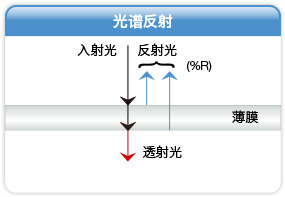

Spectral ellipsometer (SE) and spectral reflectometer (SR) both use the analysis of reflected light to determine the thickness and refractive index of dielectric, semiconductor, and metal thin films. The main difference between the two is that ellipsometers measure light reflected from thin films at small angles, while spectrometers measure light reflected vertically from thin films.
Guide to Obtaining Reflectance Spectroscopy
The different angles of incident light result in differences in cost, complexity, and measurement capability between the two technologies. Due to the fact that the light of the ellipsometer is incident from one angle, it is necessary to analyze the polarization and intensity of the reflected light, so that the ellipsometer has strong measurement capabilities for ultra-thin and complex thin film stacks. However, polarization analysis requires expensive and precise mobile optical instruments.
Spectral reflectometry measures vertical light and ignores polarization effects (the vast majority of thin films are rotationally symmetric). Because it does not involve any mobile devices, the spectral reflectometer has become a simple and low-cost instrument. Spectral reflectometry can be easily integrated with more powerful transmittance analysis.
From the table below, it can be seen that spectral reflectometry is usually the preferred method for thin film thicknesses exceeding 10um, while ellipsometry focuses on film thicknesses thinner than 10nm. Both techniques are available for thicknesses between 10nm and 10um. Moreover, spectral reflectometers that are fast, simple, and cost-effective are usually a better choice.